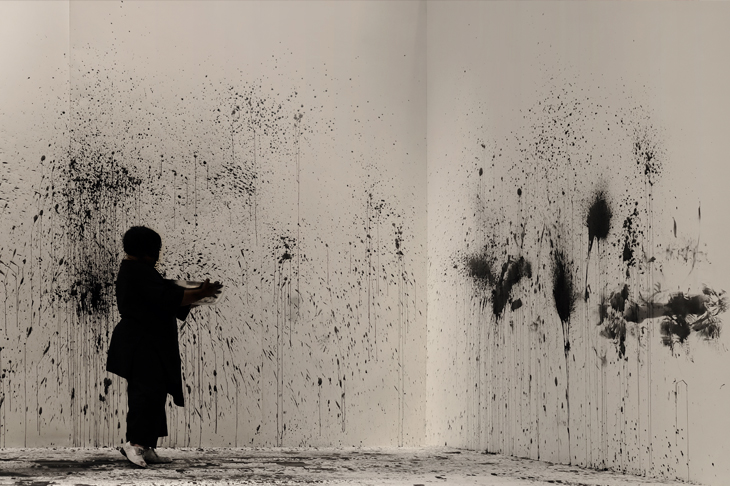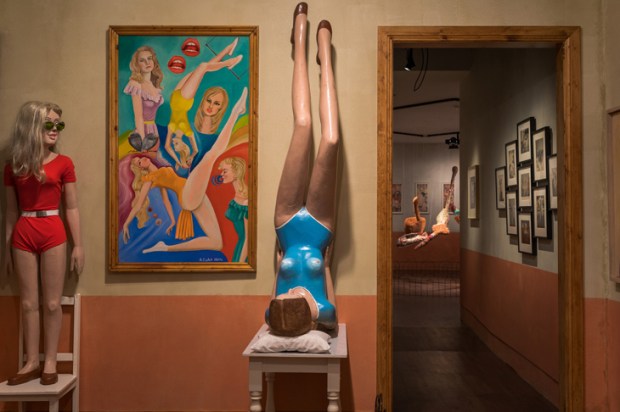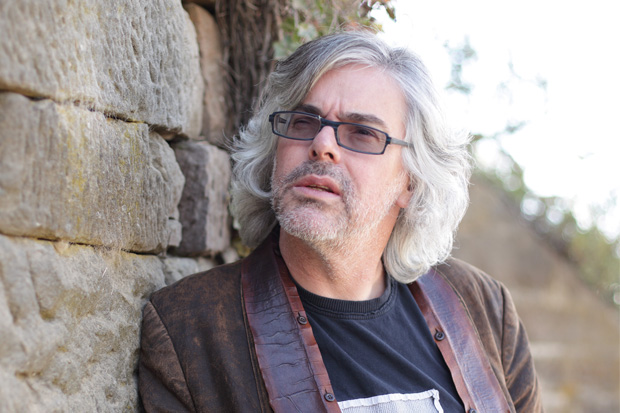When Indonesian artist Arahmaia-ni Feisal first exhibited Lingga-Yoni, she received death threats. Against scrawled Arabic script, the 1994 artwork showed a vermillion red phallus and forest green vulva. They were the ‘lingam’ and ‘yoni’ of the title: representations of gods in pre-Islamic Java. Feisal was condemned as blasphemous by Islamic hardliners. Afraid for her life, she fled to Perth.
For years, Feisal believed her most seminal work lost or destroyed. It had, in fact, been moved abroad. Now, for the first time, Lingga-Yoni is back in Indonesia. Not only that. Today it hangs on the walls of the newly-opened Museum of Modern and Contemporary Art in Nusantara or Museum MACAN.
‘It’s the most important painting in the collection,’ says Charles Esche, co-curator of the museum’s inaugural exhibition Art Turns. World Turns.
Founded by sorbitol tycoon Haryanto Adikoesoemo, Museum MACAN draws on over 800 works in his ever-growing collection, featuring the likes of Andy Warhol, Damien Hirst, Gerhard Richter and Ai Weiwei, as well as a host of Indonesian stalwarts. Feisal, however, sums up the museum’s raison d’être best: to help search out, and to reflect back, Indonesia’s complex, convoluted, and at times fraught history and identity.
Indonesian art, fostered by grassroots collectives and small, commercial galleries, has long played a major role for collectors in Asia. Yet, surprisingly for a country of some 260 million people, formal institutions – and with them the chance for a burgeoning middle class to see seminal works from at home and abroad – have been lacking.
This privately-owned museum is looking to change that. It is located in a gritty up-and-coming suburb of Jakarta in one of Adikoesoemo’s office buildings: grubby escalators spit out visitors into a white, calm space. There’s a small café, serving cheesecake and sweet matcha lattes, floor-to-ceiling windows, and a funky shop. It feels at odds with the chaos – the famously bad traffic, the sticky pollution, the street hawkers – outside.
Jakarta already hosts a number of private museums, often accessible by invitation only. Australian director Aaron Seeto, previously curatorial manager of Asian and Pacific art at Brisbane’s GOMA, has other ideas. Bald and slim, with a neat moustache and a cautious, shy demeanour, he has made sure that Museum MACAN is there for everyone (the entry price is comparable to a movie ticket). He wants Indonesians to ‘see the museum as part of their civic architecture.’
As we talk over tea, young couples linger at a scattering of indoor sculptures, taking shots on their smartphones, or mill around the coffee shop. The museum, insists Seeto, is founded above all on art education: ‘That coincides with my own deep personal philosophy around art. Art should be accessible. It shouldn’t be for certain types of elites to participate in.’ Fenessa Adikoesoemo, Haryanto’s daughter, agrees: ‘It’s a new concept for a museum that has never existed here.’
Prior to opening, Museum MACAN held two separate preview days of performance works. Both sold out within hours.
‘It goes to show the appetite here in Jakarta for something like this,’ says Seeto, with visible excitement. ‘People were curious. I think there’s a great thirst and a great hunger from the public – but also there’s anticipation from artists. They want to have diverse ways in which they can present their work and talk about it.’
One performance, Eins und Eins, saw Indonesian artist Melati Suryodarmo slurping from a bowl of ink before spitting the ebony fluid onto a chalk white wall. Drawing on a long tradition of Asian ink painting, she turned what is usually an elegant, meticulously executed process on its head: instead of showcasing beauty, the visceral, dirty, and uncomfortable act reflected, she said, a disgruntled nation.
Writing in the Rain by FX Harsono, although not a new work, was more political still and yet strangely intimate. The artist writes the characters of his Chinese name over and over, only to have them washed away. It is a moving reference to the country’s oppression of its Chinese minority, whose use of language, cultural references, and very names were penalised in the ‘60s under the Suharto regime.
Art Turns. World Turns also grapples with the past. Last year, Balinese artist Ngakan Made Ardana created a painting from an old photo album titled A Father is Trying to Collect the Memories of His Family. What should be a happy moment – a snapshot of his nearest and dearest – looks queasy, like something is wrong. Some faces remain visible; others are obscured entirely, scrubbed out as if they have been erased. It is a comment on the brutal anti-communist murders, also in the 1960s, when many ‘disappeared’ under state-organised violence. ‘Even today it is difficult to talk about,’ says Esche.
Museum MACAN wants to be broad-ranging, to delve into Indonesia’s intricacies. And that matters, says Seeto, for Australians visiting who make ‘a lot of assumptions, based on history, current events, politics. There has to be much more nuance – it’s not about trading in those constant stereotypes. Bali is not a complete representation of Indonesia. There’s much more to it.’
The museum works best – and is most daring – when it opens up discussion. That takes us back to Lingga-Yoni, with its layers of different religious meanings, from Hinduism to animism to Islam. It remains, admits Esche, ‘a bit taboo still.’
‘Arabic script is still associated with the Quran and religious texts: it’s not used in everyday life,’ he expounds. ‘The religious right here want to refuse this idea that in Indonesia there is another form of Islam that takes influences from other religions.’ Seeto, however, is wary about generalising. True, Indonesia still has controversial blasphemy laws, often used to imprison minorities; in September the government rejected recommendations by UN member states to repeal the legislation.
Yet he insists that ‘there’s a much different appreciation of what being Muslim is in a Western country to here.’
‘Here it’s just day-to-day. Lingga-Yoni talks about the long processes of cultural inter-relationships – it’s not about a particular religion,’ he says. ‘It’s about how people live.’
Got something to add? Join the discussion and comment below.
Get 10 issues for just $10
Subscribe to The Spectator Australia today for the next 10 magazine issues, plus full online access, for just $10.
You might disagree with half of it, but you’ll enjoy reading all of it. Try your first month for free, then just $2 a week for the remainder of your first year.














Comments
Don't miss out
Join the conversation with other Spectator Australia readers. Subscribe to leave a comment.
SUBSCRIBEAlready a subscriber? Log in